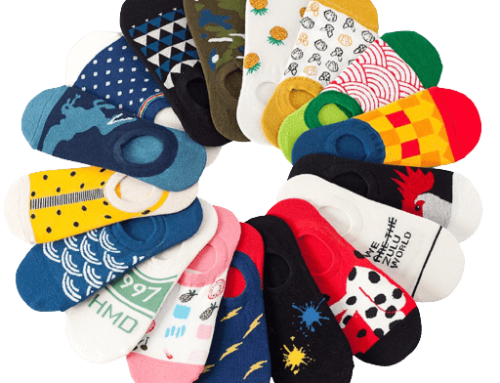Making your own custom socks is easier than you might think. All you need is a bit of yarn and some basic knitting skills. You can find sock yarn at any craft store, or even online.
And there are plenty of free knitting patterns available online as well. So grab your needles and let’s get started!
- Choose the fabric you want to use for your socks
- Cut the fabric into a sock shape, using a template or freehand
- Sew the sock together, leaving an opening for your heel
- Turn the sock right side out and try it on to make sure it fits properly
- Finish sewing the sock closed, then repeat steps 2-5 for the other sock
How to Make Custom Socks?
1. Choose the right sock blank. Sock blanks are pre-sewn tubes of fabric that you can decorate however you’d like. When choosing a sock blank, consider the type of fabric you want (cotton, wool, etc.), the size and shape of the sock, and any special features you may need (thickness, padding, etc.).
2. Decorate your sock blank. This is where you’ll let your creativity shine! There are endless possibilities for how you can decorate your socks – use fabric paints or markers to add patterns or images, sew on patches or appliques, or even knit or crochet embellishments onto the fabric.
Get creative and have fun with it! 3. Finish up your socks. Once you’re happy with how your decorated sock looks, finish off the raw edges with a sewing machine or by hand-stitching them closed.
Then try them on to make sure they fit well – adjust as needed before finalizing your project. And that’s it – enjoy wearing your one-of-a-kind custom socks!
How Do You Make Personalized Socks?
Another way to make personalized socks is to buy a pair of blank white socks and then have them printed with a design, image, or text of your choice. This can be done at most printing shops or online. Finally, you could also knit or crochet a pair of socks with your own personal touches like colors, patterns, and embellishments.
How Much Does It Cost to Make Custom Socks?
But if you want a more complex sock with multiple colors or an intricate design, the price could go up to $10-$15 per pair. And if you are using luxury materials like cashmere or silk, expect to pay even more. Overall, the cost of custom socks can range anywhere from $3-$15 per pair, depending on your specific needs and wants.
How Do You Print on Socks?
You then place the HTV onto the sock and run it through the heat press. The heat from the press will cause the vinyl to adhere to the sock material. Another method that can be used is sublimation.
This requires special inks and a printer that is capable of printing with sublimation inks. You will also need some type of transfer paper. Once you have your design printed onto the transfer paper, you’ll need to place it on the sock and then run it through a heat press.
The high temperatures will cause the ink to turn into gas, which will then permeate into the fabric of the sock. One final method that can be used is direct to garment (DTG) printing. This is similar to how you would print a design onto a t-shirt.
A DTG printer uses inkjet technology to print directly onto fabric.
How Long Do Custom Socks Take?
The good news is that there are ways to speed up the process. If you have some flexibility in your design, consider using an existing sock template. This will help the company save time and money on production.
You can also try ordering a smaller quantity of socks – this will usually result in a faster turnaround time.
Conclusion
You can find all of these supplies at your local craft store. Once you have your supplies, simply follow the instructions below to make your very own custom socks! Instructions:
1. Cast on 64 stitches onto one of your circular needles. Join in the round being careful not to twist the stitches. Place a marker at the beginning of the round.
2. Work in k2, p2 ribbing for 1 inch. 3. Next, begin working in stockinette stitch (knit all rounds) until the sock measures 7 inches from the cast on edge. For a longer sock, work until 8 or 9 inches from the cast on edge.
When measuring, be sure to stretch the sock slightly so that it will fit comfortably when worn.


